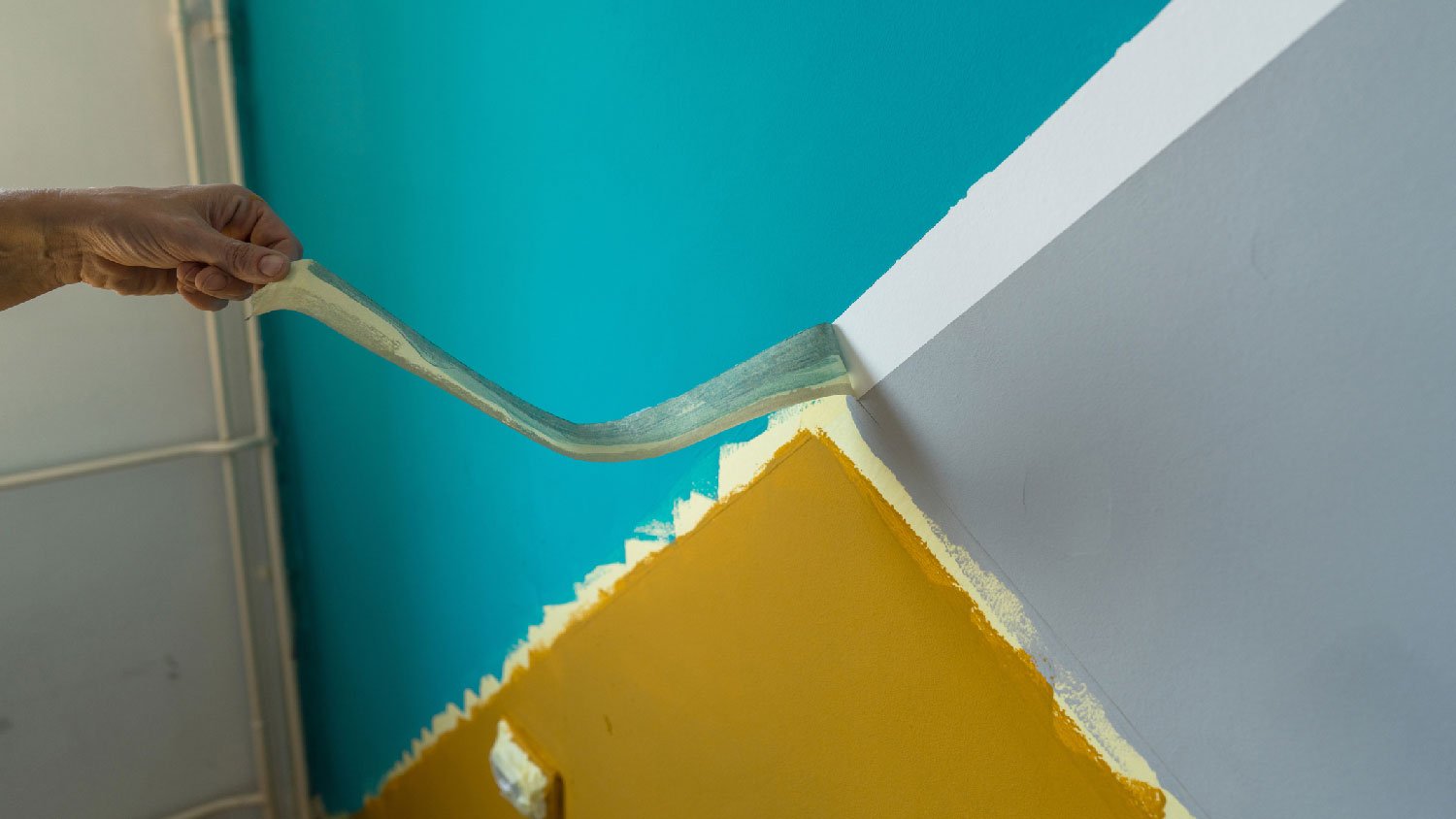
The cost to paint the interior of a house in Raleigh, NC depends on size, layout, type of surface, and more. Learn what factors can influence your total in this guide.
Paint like a pro


Painter’s tape minimizes paint splatter and stray brush strokes.
You should remove painters tape once the paint is dry to ensure clean lines and peel slowly to reduce mistakes.
Painter’s tape costs between $10 to $20 per roll on average.
Painter’s tape makes your paint job look as clean and precise as possible. So, knowing when to remove painter’s tape to ensure clean lines is essential to make all that taping worth it. Read on to learn the ins and outs of using painter’s tape to make your paint job just right.
When it comes to learning how to paint walls, painters tape is likely going to come up in those steps. So, what is it exactly? Painter’s tape is a pressure-sensitive tape that leaves no residue behind as long as you remove it in a timely manner. You’ll want to place painter’s tape around the top and bottom of walls to prevent paint from getting on the baseboards or ceilings.
Painter's tape will ensure crisp, clean lines, but only if you use it correctly. Wash and dry your surface before applying tape, then remove it as soon as the paint is dry to the touch.

Here are some key tips to remember to ensure clean lines when removing painter’s tape.
Exactly how long it takes to paint a room depends on how many coats you need. Once you’ve determined you’re on the last coat, ensure it is fully dry before removing the painter’s tape. This will prevent any paint that hasn’t fully dried yet from splattering and getting on unwanted surfaces when you remove the tape.
Paint takes a decent amount of time to dry, so once you’ve waited that long, don’t bother rushing with this next step. Peel the painters tape off slowly and keep an eye on the lines as you go along.
While painter’s tape is meant to be used on paint and not leave residue behind, this doesn’t mean you should leave it stuck to your walls for days on end. The longer you leave it, the harder it will be to remove.
It might feel nice to peel off the tape in one clean strand. But, the longer the strand you’re holding onto, the less control you have, which makes mistakes more likely.
If you’re concerned with ensuring these clean lines yourself, you can hire a painter who will tackle the whole job for you. Look into interior painting companies near you to find the best person for the job you want done.
Painter’s tape is a pretty commonly recommended supply needed to paint a room. It is also pretty affordable, costing between $10 to $20 per roll. If you’re DIY-ing a home painting project, painter’s tape might be worth it to ensure the most professional-looking job is done.
From average costs to expert advice, get all the answers you need to get your job done.

The cost to paint the interior of a house in Raleigh, NC depends on size, layout, type of surface, and more. Learn what factors can influence your total in this guide.

The cost to paint the interior of a house in Washington, D.C. depends on size, layout, type of surface, and more. Learn what factors can influence your total in this guide.

An accent wall is a great way to elevate any room. Find out how much it costs to paint an accent wall and what factors affect how much you’ll pay.

Looking to refresh your living space but overwhelmed with the color options? Check out these popular paint colors to for some inspiration.

Are you ready to enliven your bathroom and protect it from moisture? Learn how to paint a bathroom with the right tools and techniques to give you peace of mind.

A faux wall finish done correctly can transform an entire room. Discover the pros and cons of 15 of the most popular faux painting techniques with Angi.